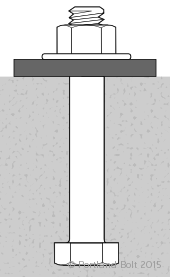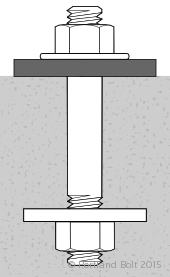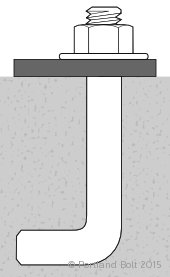Galvanized Anchor Bolts
How a Headed Anchor Bolt is Made and Galvanized
What qualifies as an anchor bolt?



According to the ASTM (American Society for Testing and Materials) anchor bolts are:
Anchor bolts are intended for anchoring structural supports to concrete foundations. Such structural supports include building columns, column supports for highway signs, street lighting and traffic signals, steel bearing plates, and similar applications.
Wikipedia explains further:
An anchor bolt is used to attach objects or structures to concrete. There are many types of anchor bolts, consisting of designs that are mostly proprietary to the manufacturing companies. All consist of a threaded end, to which a nut and washer can be attached for the external load. Anchor bolts are extensively used on all types of projects, from standard buildings to dams and nuclear power plants.
Hot-dip Galvanizing

Hot-dip galvanizing is a process in which anchor bolts are dipped in a bath of approximately 840° F molten zinc. Zinc bonds to the steel, creating a corrosion-resistant coating on anchor bolts that will be exposed to the elements. The challenging part of the galvanizing process is preventing excess zinc from building up in the threaded portion of the anchor bolt. Companies that specialize in the galvanizing of anchor bolts employ centrifuge systems that “spin” the excess zinc from the surface of the threads after the bolts are dipped and while the zinc is still in a molten state. ASTM specification F2329 covers the galvanizing process related to threaded fasteners, nuts, and washers.
